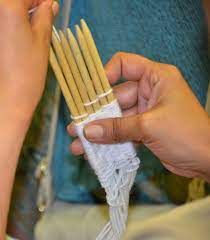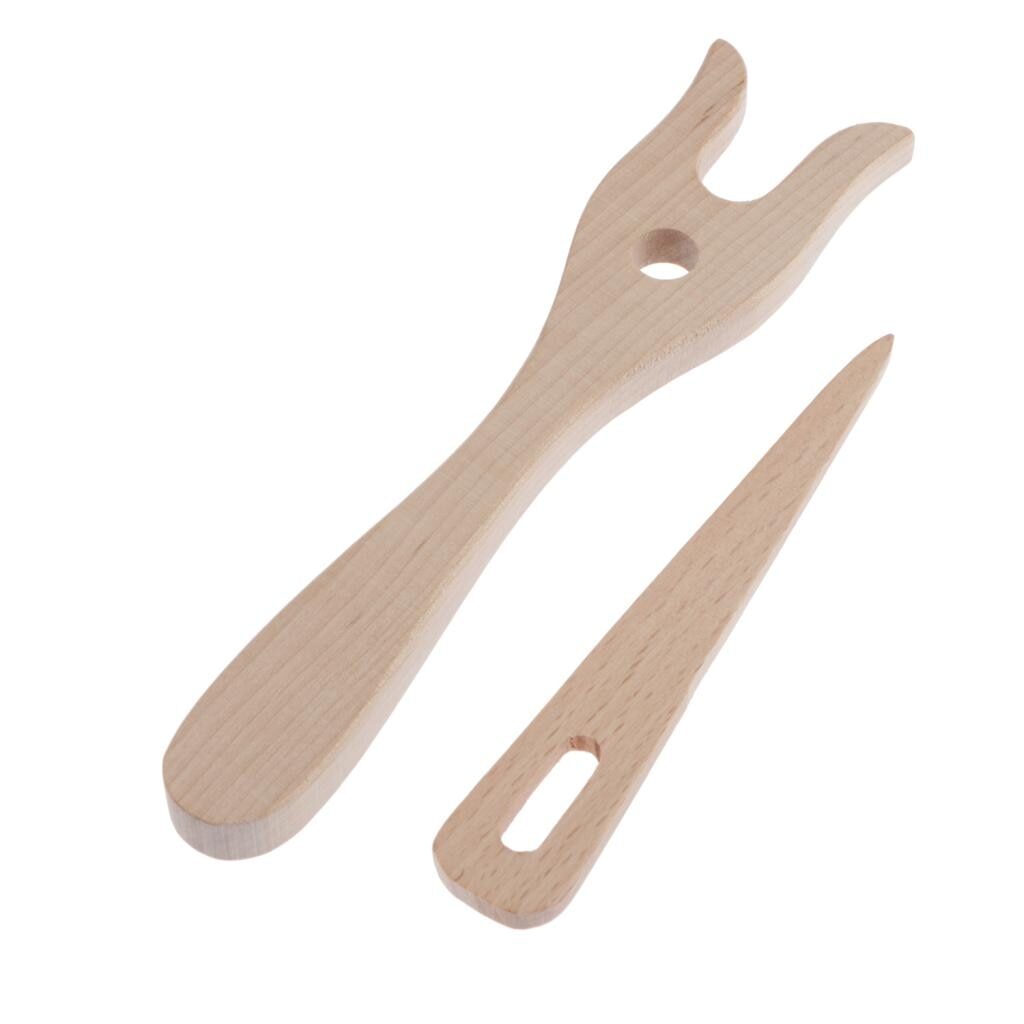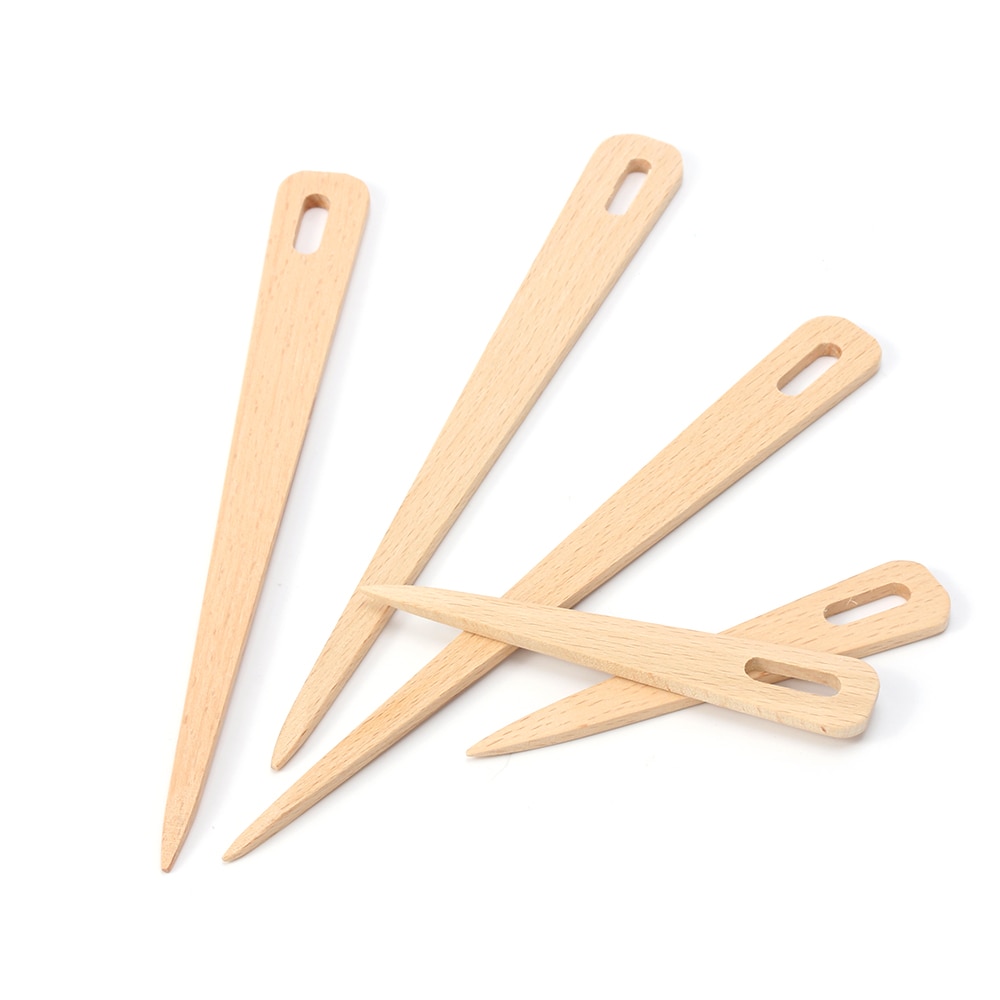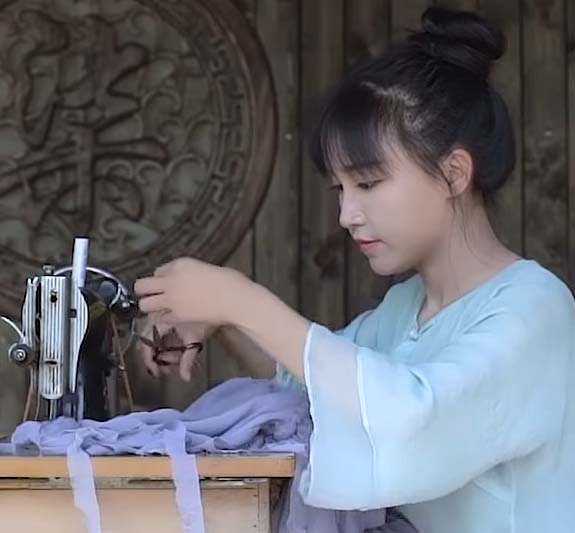Weaving on Weaving Sticks
Weaving on weaving sticks is a medieval craft that makes thin strips of woven fabric. These thin strips can then be used as they are, or else stitched together side by side to make a wider piece of fabric.

The sticks for stick weaving are usually made of wood. They can be of various thicknesses, most often about ¼ to ½ inch (6mm to 12mm). One end of the stick is tapered to a dull point. The other end has a hole through it. Stick weaving is done with two or more sticks held in the hand.
I hope to be able to offer weaving sticks to Craftsteaders in the future. We can. however, offer a lovely range of beautiful cotton yarns.
Meanwhile over on YouTube, Alison Russell teaches you how to make your own weaving sticks from felt pens and Little Bird shows you how to weave with sticks.



